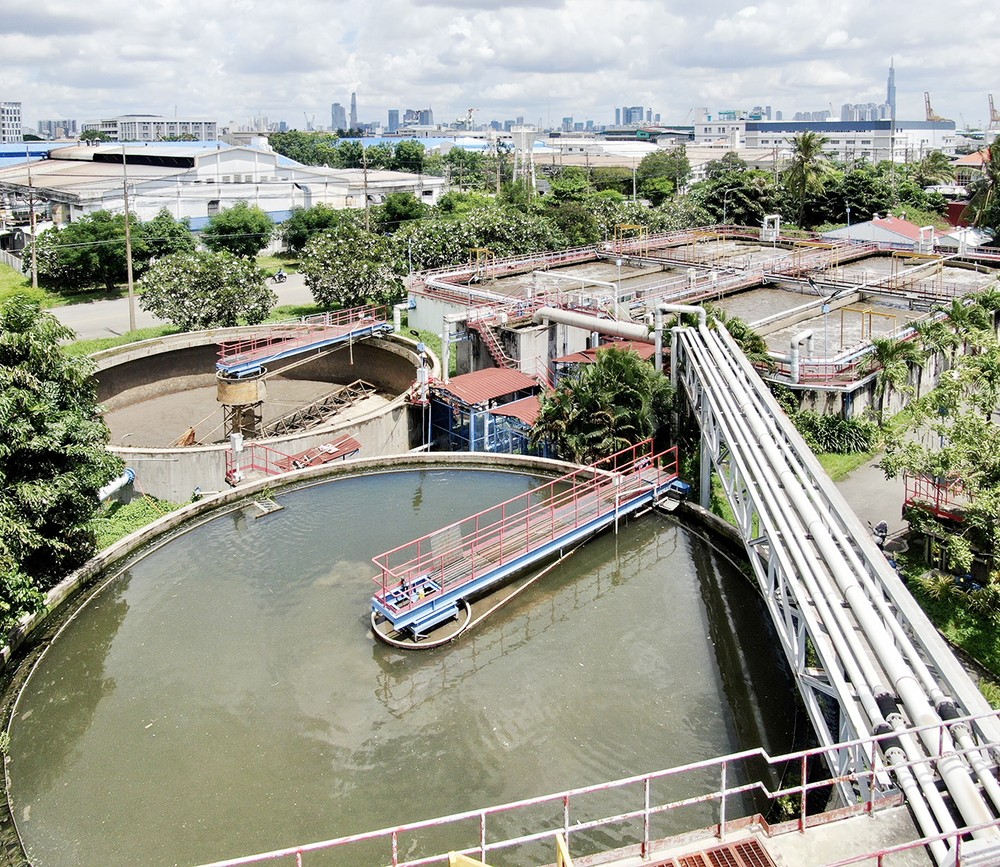
After 30 years of formation and development, the number of industrial parks (IPs) in Vietnam has reached more than 400 across 61 out of 63 provinces and cities. These parks have made important contributions to the national economy.
However, facing the requirement of green development with the aim of achieving zero carbon emissions by 2050, the development of green industrial parks is very important and there is still much work that needs to be done.
According to the Ministry of Planning and Investment, out of 414 industrial parks established across the country, 293 have been put into operation on a total area of leased industrial land of 46,551 hectares, reaching an occupancy rate of nearly 74 percent.
Currently, many businesses from 65 countries and territories investing in Vietnam's industrial parks include the 10 largest investment partners such as Korea, Japan, Singapore, Taiwan (China), Hong Kong (China), China, the Netherlands, British Virgin Island, Samoa, and Malaysia. The capital of these largest partners accounts for 91 percent of total capital.
Industrial parks and economic zones in recent times have not only attracted a large amount of investment capital and supplemented resources for development investment while accelerating the process of industrialization and modernization, transformed development space and promoted regional and industry linkages, but also significantly contributed to job creation, labor restructuring and increasing labor productivity.
However, during their operation, industrial parks and economic zones have revealed limitations that need to be overcome. Ngo Cong Thanh from the Vietnam Industrial Park Finance Association - VIPFA who is former Deputy Director of the Planning Management Department under the Ministry of Planning and Investment acknowledged that there have still been inadequacies in the development orientation of industrial parks and economic zones such as lack of an overall, long-term vision and lack of industry and regional connectivity.
Mr. Ngo Cong Thanh emphasized that the quality and efficiency of attracting investment has not met the requirements for in-depth development and cooperation within industrial parks, economic zones. Meanwhile, the linkage between economic zones and outside areas is still limited.
On the other hand, according to Mr. Thanh, the development is slow along the way of innovation whereas the development is not sustainable and balanced in terms of economy, society, and environment. Moreover, he said that the efficiency of land use and labor use is not high.
Localities and investors that have been developing domestic industrial park infrastructure have still been focusing on attracting investment to fill the occupancy rate, but they have not really paid attention to the industry structure, technology, and environmental and social factors of investment projects.
The Ministry of Planning and Investment’s report to summarize 30 years of industrial park and economic zone development states that by 2030, 40 percent-50 percent of localities will convert existing industrial parks to ecological industrial parks and 8 percent-10 percent of localities will have an orientation towards the construction of new ecological industrial parks.
However, many legal issues related to the formation and development of industrial parks and the conversion of existing industrial parks to industrial parks have not yet been legislated or specifically guided.
According to experts, although the concept of cleaner is understood to have higher environmental standards than those currently in effect, there are no clear criteria accompanying inspection and administrative sanctions which are applied specifically to businesses in industrial zones.
Furthermore, the incentives for access to land, planning, capital, science and technology, and the responsibilities of parties throughout the process of building and operating eco-industrial parks to attract businesses to invest in this type of industrial parks have been still vague. Meanwhile, investors in industrial park infrastructure must spend a huge amount of money on building a standard waste treatment system.
According to estimates, the wastewater treatment system accounts for nearly 1/3 of the total investment in industrial park infrastructure. The government wants to ensure green standards but it must ensure businesses that invest in industrial park infrastructure to have profit. Otherwise, they will just dump it into the environment or only process a small part, Mr. Tam frankly said.
By 2030, there will be about 120,000 hectares of industrial parks. According to the national land use plan approved by the National Assembly on November 13, 2021, the land area for industrial park development will reach about 210,930 hectares by 2030. Thus, from now to 2030, there will be about 120,000 hectares of industrial parks, of which the area of industrial land for rent is about 80,000 hectares- 85,000 hectares.
























